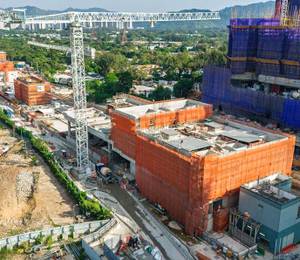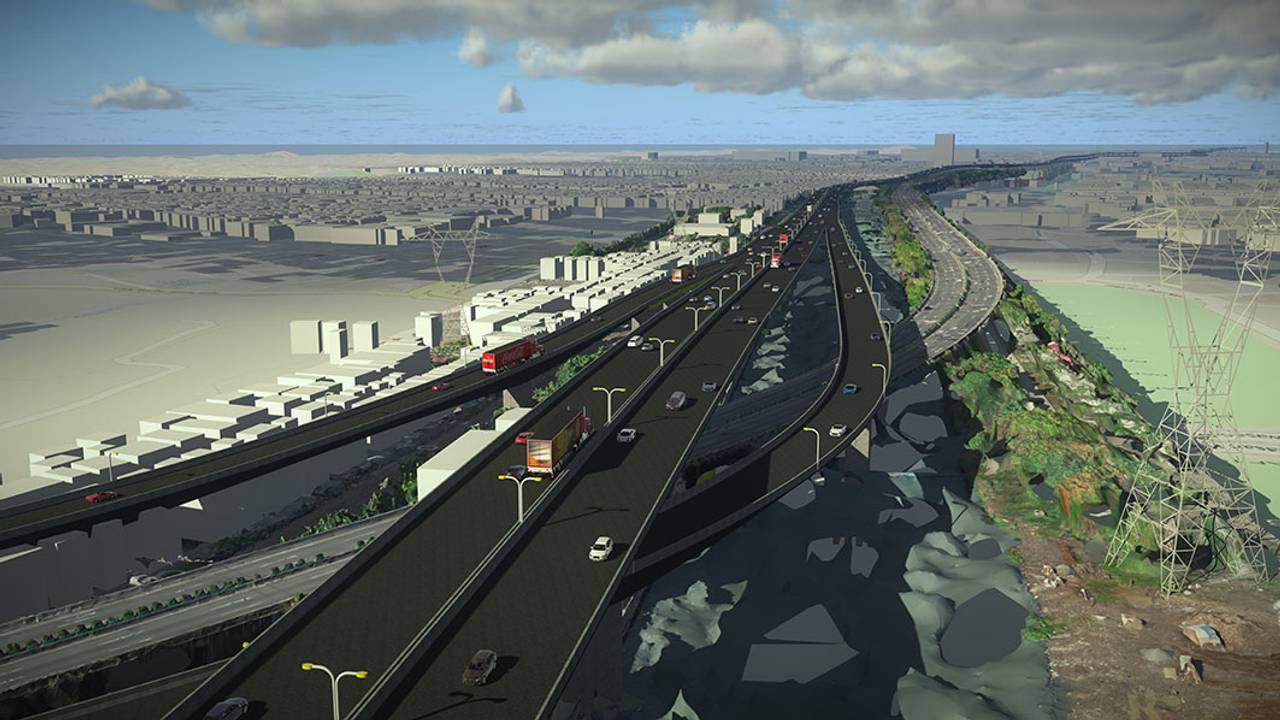The Harbour Road 2 bridge design and build project in Jakarta is a new double-decker elevated toll road in Indonesia. Upon completion, it will provide efficient road access between Ancol and Pluit area and will accommodate intermodal services, such as toll roads, trains, light rapid transit, and busways. It is expected to accommodate 63,500 vehicles per day along 9 km of the elevated toll road.
The project is part of the government’s strategic programme to reduce traffic congestion on the north side of Jakarta. It is expected to set a new benchmark in overcoming the technical challenges of building one of the longest double-decker bridges in the world with a total length of 3.985 km.
Indonesian construction company PT. Wijaya Karya (Persero) Tbk (WIKA) is performing design review on this US$530 million project. The double-decker design was chosen to make the best use of a site constrained by heavy traffic, surrounding buildings, road interchanges, railroads, and waterways, as well as underground and intertwined gas pipelines, water pipes, and optical fibre lines.
The project required an effective road structure and alignment design, so that the project team could place the piers without disturbing river traffic. The team also needed to gain all necessary approvals from the appropriate ministries, yet still adhere to a tight schedule. As such, WIKA needed innovative design and work processes to face these challenges and to ensure it executed the project with the highest standards possible.
Reducing costs with BIM
In the survey phase, the team used ContextCapture from Bentley Systems to process imagery for photogrammetry in only 10 days, six times faster than using previous methods. This reality context reportedly helped WIKA reduce design errors, compress the project timeline by four months, and save US$6 million.
Bentley’s OpenRoads Designer, OpenBridge Modeler, and gINT softwares were used by WIKA to produce final designs and alignments, helping them to eliminate 1,600-sq-m of waterway foundation work and reduce design iterations by 25 working days, saving approximately US$120,000. The parametric design capabilities of OpenBridge Modeler increased modelling efficiency by over 40% compared to previous modeling methods.
In addition, the project team used Bentley Navigator to analyse project progress and reduce time dimension conflicts, which allowed the project to be completed on time. Anticipated savings during the design stage, are expected to be as much as 10% of the project value. The use of Bentley’s open modelling and simulation applications for their interdisciplinary collaborative workflows helped WIKA create very precise and dynamic deliverables.
As construction progresses toward completion in 2022, WIKA anticipates these BIM applications will have helped them lower labour costs and reduce construction rework and increase profit margins and cost efficiency by another 10%. The company said Bentley’s BIM applications will help increase the return on investment by achieving ROI three years earlier than the initial target date of 2035.
“Bentley’s BIM solutions provide comprehensive infrastructure applications that help us optimise project costs, improve the efficiency of the design process time, and ensure project safety. Bentley’s technology and interoperability have played a vital role in this project becoming a new benchmark in the construction industry in Indonesia,” said Romi Ramadhan, BIM manager of PT. Wijaya Karya.
Pt Wijaya Karya (Persero) Tbk is the winner of the Year in Infrastructure 2019 Award in the Bridges category.












